PINPOINT
Endoscopic fluorescence imaging
The PINPOINT Endoscopic fluorescence imaging camera provides high definition white light video and SPY Fluorescence Imaging.
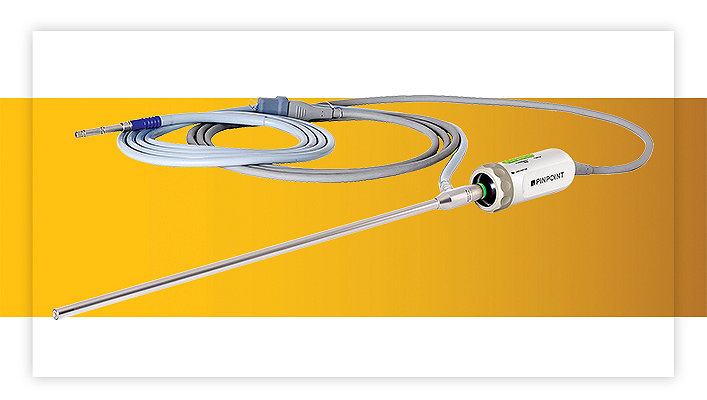
Visualize tissue perfusion and biliary ducts in a different light.
PINPOINT offers simultaneous, real-time, high definition white light and fluorescence imaging through a single laparoscope. This enables surgeons to visualize tissue perfusion and biliary ducts during multiple minimally invasive procedures.
The fluorescent imaging agent [indocyanine green] binds to protein in blood and is excreted by the liver thereby providing laparoscopic visualization of the bile ducts1. In colorectal, esophageal and bariatric surgeries, SPY Fluorescence enables visual assessment of blood flow in vessels and tissue perfusion.
One technology,
multiple minimally invasive applications
PINPOINT offers brilliant, high-definition, white light video with the added advantage of SPY Fluorescence Imaging technology, which has been demonstrated as beneficial in a variety of surgical applications.2, 3, 5
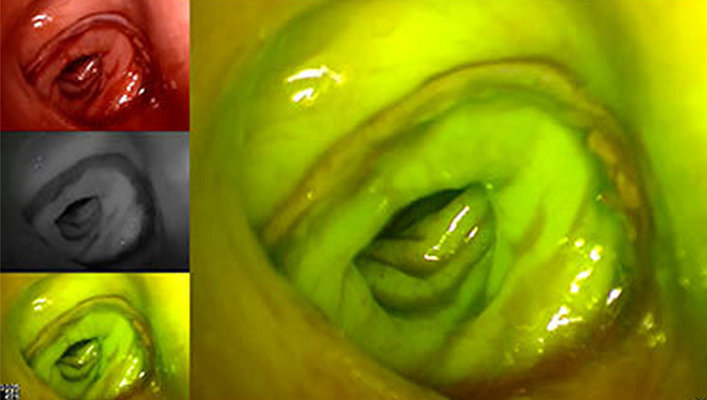
Colon resection
Assessing tissue perfusion may assist surgeons in making informed decisions that can positively impact outcomes.3
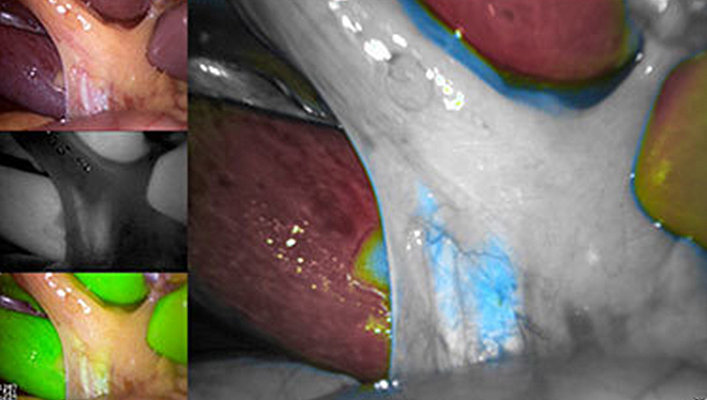
Laparoscopic cholecystectomy
ApVisualizing biliary ducts and the critical view of safety, may be easier with PINPOINT.4
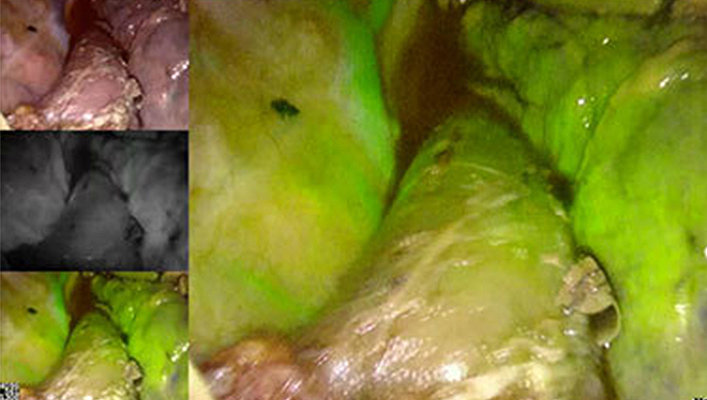
Minimally invasive esophagectomy
During esophagectomy, PINPOINT may help surgeons evaluate the gastric conduit.5
The PINPOINT camera
is the next generation of fluorescence imaging technology
The camera features leading-edge sensor technology and its custom optics provide for vividly colored and high contrast images across all PINPOINT display modes.
Intraoperative perfusion assessment
Allows surgeons to visualize tissue perfusion and biliary ducts intraoperatively and in real-time.
Increased confidence
Fluorescence imaging may assist surgeons with critical decisions during surgery.3
Improved outcomes
Allows surgeons to assess perfusion, which may improve patient outcomes.3
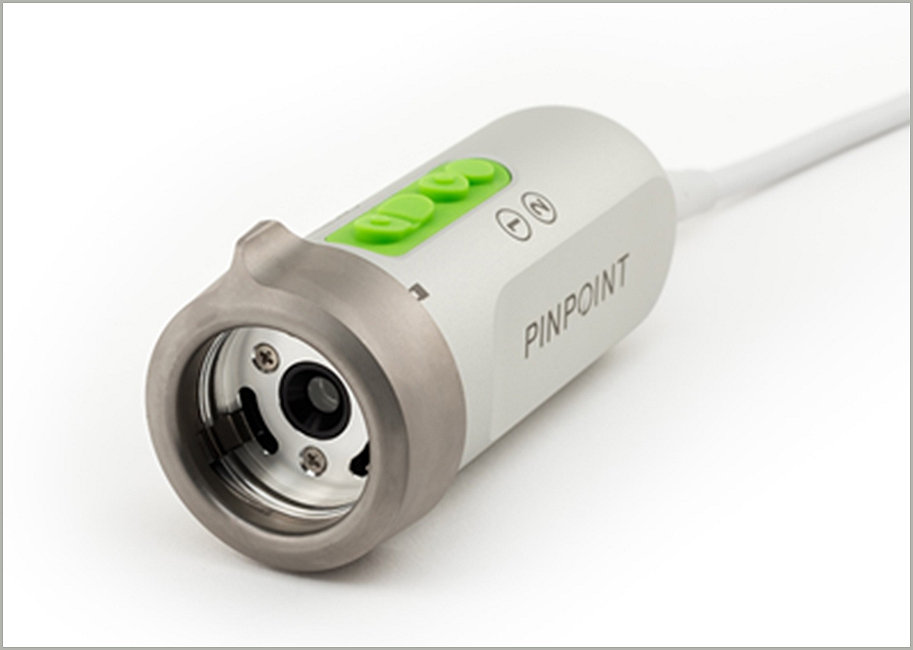
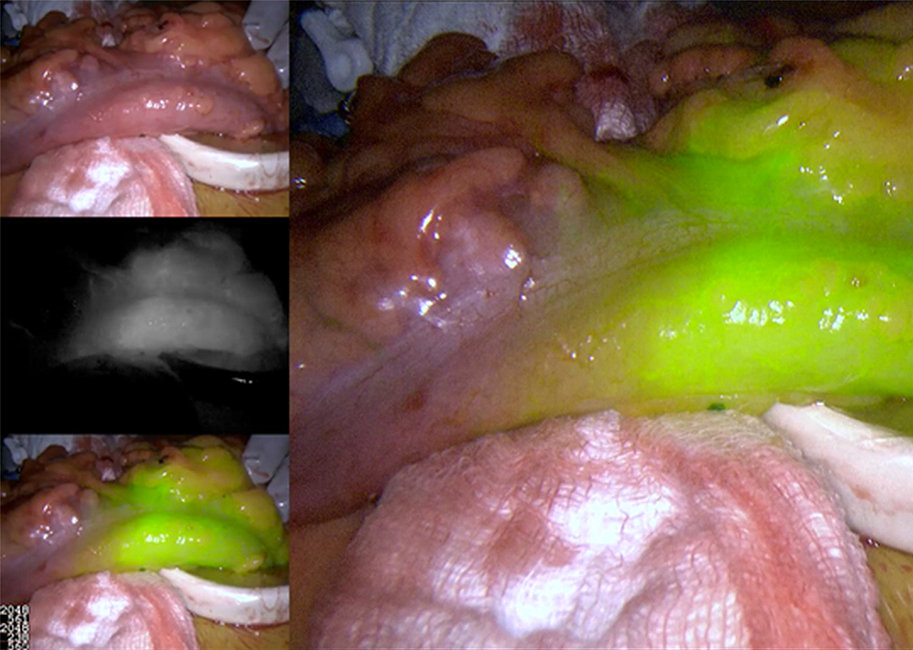
Dedicated to
improving outcomes
Published literature has long confirmed the significant social and economic burden associated with postoperative complications. More than 180 peer-reviewed medical journals have supported the use of SPY technology. Many of these studies have demonstrated an improvement in patient outcomes and a reduction in hospital costs as a result of SPY technology.2 In fact, the PILLAR II trial found that the use of SPY technology may assist in surgical decision making, which may reduce the occurrence of costly complications.3
References
- Ott, Peter. Hepatic Elimination of Indocyanine Green with Special Reference to Distribution Kinetics and the Influence of Plasma Protein Binding. Pharmacol Toxicol. (1998)
- Starker, Paul. “Using Outcomes Data to Justify Instituting New Technology: a Single Institution’s Experience.” Surgical Endoscopy, Dec. 2017, pp. 1586–1592.
- Jafari MD, Wexner SD, Martz JE, McLemore EC, Margolin DA, Sherwinter, DA, Lee SW, Senagore AJ, Phelan MJ, Stamos MJ. Perfusion Assessment in Laparoscopic Left Sided/Anterior Resection (PILLAR II): A Multi-Institutional Study. JACS. Vol. 220, No. 1, January 2015.
- Tsutsui, N. “Optimal Timing of Preoperative Indocyanine Green Administration for Fluorescent Cholangiography during Laparoscopic Cholecystectomy Using the PINPOINT® Endoscopic Fluorescence Imaging System.” Asian Journal of Endoscopic Surgery , Dec. 2017.
- Fikfak, V. “Endoscopic Evaluation of Gastric Conduit Perfusion in Minimally Invasive Ivor Lewis Esophagectomy.” Int J Surg Case Rep, 2016, pp. 112–114.
Lit number: 1000902763 Rev A
